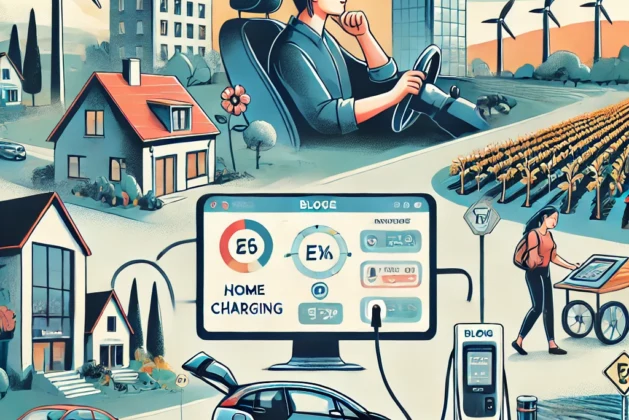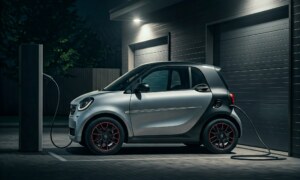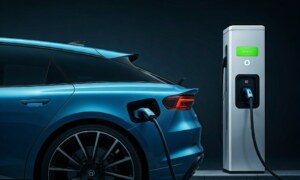With electric vehicles (EVs) becoming more mainstream, many drivers are switching from traditional ICE (Internal Combustion Engine) cars to environmentally friendly alternatives. While the advantages of EVs—such as lower emissions, reduced fuel costs, and smooth driving—are clear, they may not be suitable for everyone. Certain groups may find adopting an EV more challenging due to infrastructure, lifestyle, and technological barriers. Let’s explore who might struggle with EV ownership and why.
1. People Without Access to Home Charging
One of the main advantages of owning an EV is the ability to charge it at home, but not everyone has that option.
- Apartment dwellers or those in condominiums often don’t have a designated parking space with the ability to install a home charging station.
- Urban residents might struggle with public chargers, as they may be in short supply or located far from home.
Solution: While public charging infrastructure is expanding in many cities, the convenience of home charging is still a significant advantage for those with access to it.
2. Long-Distance Drivers and Commuters
EVs have made significant progress in terms of range, but long-distance driving can still be a challenge.
- Many EVs offer ranges between 200-400 kilometers, which can be limiting for drivers who need to cover long distances in a single trip.
- Charging an EV takes longer than refueling an ICE (Petrol/Diesel) car, and even fast chargers require more time. Planning charging stops is essential, which can be inconvenient for long-distance commuters.
Solution: Charging networks are expanding, particularly along highways, but those who regularly travel long distances may need to carefully plan their routes and charging stops.
3. The Complexity of Charging Apps – Especially in Different States
One of the less discussed, but very real, challenges for EV drivers is the complexity of using various charging apps, especially when traveling across regions or states.
- Multiple Charging Networks: Unlike petrol/diesel pump stations, which are fairly standardized, EV charging stations are operated by different companies. This means drivers often have to download and register with multiple apps (like ChargeMod, Tata Power EZ Charge, Zeon, GO Ec. EZ4EV, Ionage etc..) to access chargers from different networks.
- Inconsistent User Interfaces: Each app has a different interface and payment system, which can be confusing and time-consuming, especially for those traveling in unfamiliar areas.
- App Compatibility: Sometimes, an app may not be fully functional in certain regions due to local network issues or different charging protocols, causing frustration when trying to find a working charger.
- Inter-State Travel: When crossing state borders, EV drivers might encounter charging stations that don’t accept their preferred app or payment method, leading to detours in search of compatible stations.
Solution: Some EV manufacturers are working to integrate multiple charging networks into their vehicles’ native systems (e.g., TATA network, Ionage..etc.), but many third-party charging apps still require coordination and planning. Unified platforms for charging, as well as improvements in app usability, are needed to make this process smoother.
4. Rural Residents and People in Remote Areas
While EVs are ideal for urban areas, rural and remote regions may not be equipped with the necessary charging infrastructure.
- People living in rural areas may struggle to find chargers, especially in regions where electrical grids are less reliable.
- Longer driving distances between locations can create range anxiety, making EVs less practical in these areas.
Solution: Governments and private companies are investing in expanding rural charging networks, but EV ownership might still be more convenient in cities and suburbs.
5. Drivers Who Need Heavy-Duty Vehicles
EV technology is advancing, but heavy-duty vehicles like trucks or those used for towing and hauling may still face limitations.
- Towing or carrying heavy loads can significantly reduce the range of an EV, which could be a concern for individuals who rely on their vehicles for work.
- While electric trucks are available, they often come with a higher price tag and are still catching up to their ICE counterparts in terms of capacity.
Solution: As EV technology evolves, electric trucks are improving, but those needing heavy-duty performance may prefer to wait for more capable and affordable models.
6. Budget-Conscious Buyers
Although EVs have lower running costs (with cheaper fuel and maintenance), their initial price can be a hurdle.
- EVs often have a higher upfront cost due to battery technology and advanced features, which can make them less accessible for those on a tight budget.
- While incentives and subsidies are available in many regions, they may not be enough to offset the price difference for some buyers.
Solution: As battery production scales and costs decrease, EV prices will continue to drop, making them more accessible over time.
7. Tech-Skeptical or Less Tech-Savvy Individuals
EVs come with advanced technology, from touchscreen controls to app integrations, which may feel overwhelming for some drivers.
- Tech-skeptical individuals or those unfamiliar with apps and digital interfaces might struggle with the technology required to operate and maintain an EV.
- Features such as over-the-air updates, smartphone apps for managing the vehicle, and even autopilot systems can be daunting for those who prefer a more traditional driving experience.
Solution: Automakers are focusing on creating more user-friendly experiences, but some individuals might still prefer the simplicity of gasoline-powered cars.
8. Cold Climate Residents
EV batteries are less efficient in extremely cold temperatures, which can reduce range and charging speed.
- Drivers in cold climates may experience up to a 40% reduction in range during winter months, making it harder to rely on an EV for long trips.
- Heating the cabin and battery in cold weather uses additional power, further reducing efficiency.
Solution: Automakers are developing better thermal management systems for batteries, but cold-climate drivers should still plan for some reduction in range.
Conclusion: Who is EV Ownership Best For?
While electric vehicles are becoming more accessible, they still present challenges for certain groups of people. Those with reliable access to home charging, tech-savvy individuals, and urban dwellers are more likely to have a smooth EV experience. However, rural residents, long-distance commuters, and people who rely on heavy-duty vehicles may find the current limitations of EV technology and infrastructure more cumbersome. The complexity of managing multiple charging apps, especially when traveling across states, adds an extra layer of inconvenience.
As technology continues to evolve and charging infrastructure expands, many of these barriers will diminish. EVs are becoming increasingly practical, but for some, it might take a few more years before they’re the right choice.
Have you faced challenges with EV charging apps while traveling? Share your thoughts and experiences in the comments below!




Leave a comment